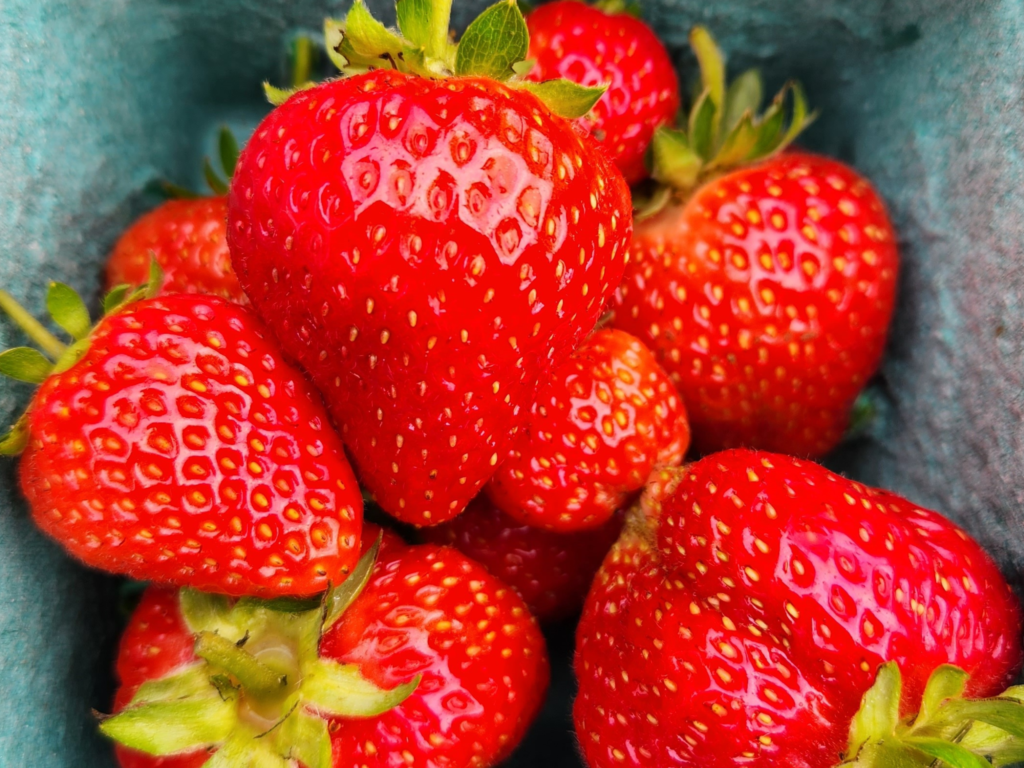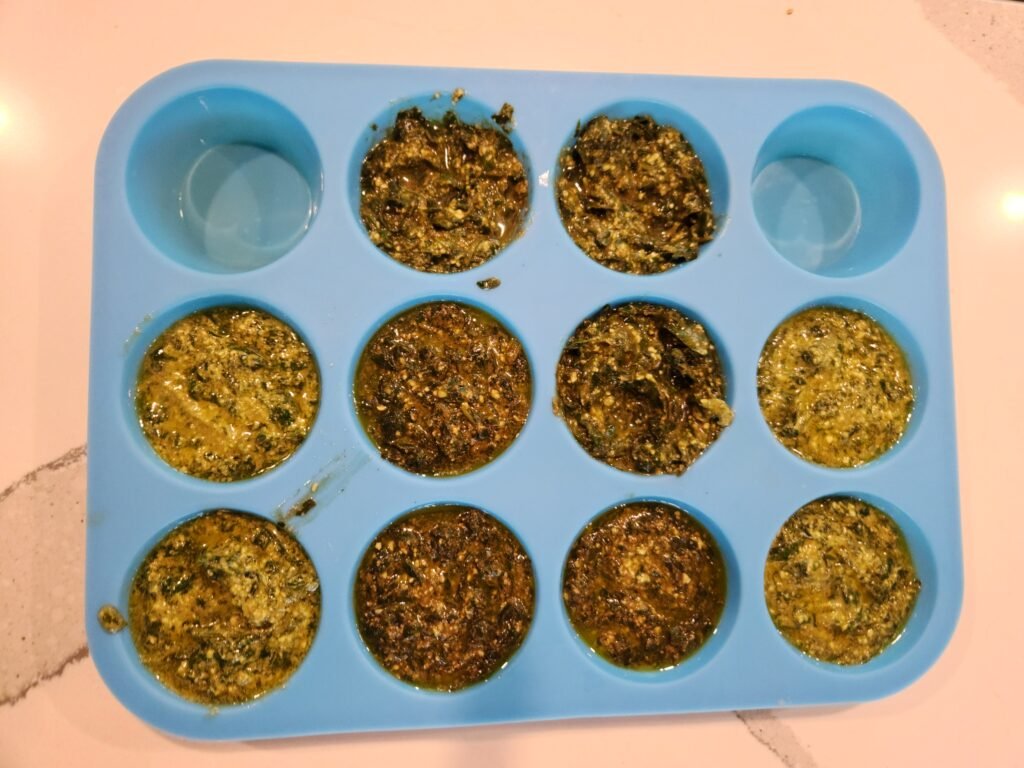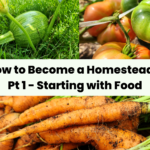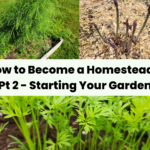In what felt like the snap of my fingers I went from living a completely city-bound life to dreaming of self-sufficiency in the country.
The 2020 pandemic changed everything in my life. It slowed me down, helped me see what mattered and introduced me to the simple joy of truly being present and making food with my owns hands. I’m so grateful for the pandemic, as it helped me see what truly mattered and made me prioritize things in my life to follow that dream and become a homesteader.
Once I decided that this was the life for me, I had no idea where to begin. It seemed like an impossible journey.
How could we move to the country when our jobs were in the city?
Could I really grow food enough to be self-sufficient when I barely knew how to cook?
If you’re wondering the same thing – then you’re in the right place.
This five-part mini-series walks you through the steps I took to go from city-slicker to homesteader in just a few short years.
This is part 3 of 5:
- Previous: Part 1 – Starting with Food
- Previous: Part 2 – Starting Your Garden
- Next: Part 4 – Go Bigger

Preface: My Story From Dirt to Knowledge
In Part 1 we talked about food: cooking from scratch and embracing whole foods in the kitchen. In Part 2 we talked about building the garden, deciding the type of beds and learning about the food you can grow in your zones. You’ve tended to the plants, cared for them with water, fertilizer, mulch, shading, but now is the ultimate test – harvest.
Harvest time is more then just pulling out carrots and potatoes you’ve grown. It’s also about assessment. it’s about seeing that yes, you’ve planted 10 seed potatoes, but only got 4-5 potatoes per plant by the end of the season. While that’s still a win because you grew it yourself, it’s also the experience of thinking back over the season and realizing, maybe you should have watered more, maybe they needed more space to grow?
Anyone can garden and just enjoy the harvest, but to truly become a homesteader, you need to track and assess your gardening each season to optimize the next.
We started keeping a garden journal to keep track of harvest numbers, weather, waterings, beds, etc. It’s been a useful tool for us over the years to know where we made mistakes, where we thrived and what we want to improve for next season.
I’m going to walk you through how we did it.
What’s Next In Your Homesteading Journey?
Once your garden starts producing, the next step is to learn, preserve, and reflect. This stage is where homesteading truly becomes part of your rhythm.
Learn From Your Experience
Quick answer: Keep a garden journal. Record your wins, mistakes, and weather conditions. You will thank yourself next year.
Every gardener, new or experienced, faces challenges. You’ll get cabbage moths on your brassicas. You’ll find powdery mildew on zucchini. Tomatoes will surprise you diseases on your tomato plants, blight or blossom-end rot to name a few.
Don’t let it discourage you – let it teach you.
Write everything down in a gardening journal: what worked, what didn’t, and the conditions each season brought. My father-in-law kept one for decades, recording the daily weather, rainfall, what thrived, and what was harvested. At the time I thought it was overkill – now as a homesteader I understand.
You should also focus on learning new skills like seed saving for the years ahead. It’s a very valuable life-skill to keep the seeds from your harvest and to use them to grow next season. We have plenty of seed saving guides for you to learn that skill.
You think you’ll remember the details, but I guarantee you won’t. As your garden grows each year, keeping records becomes the key to long-term success. Keep track, learn, and grow.

Preserving Your Abundance
This topic could fill a book (and plenty of people have written them), but here’s a simple beginner’s overview. There are two main preservation methods to start with:
Canning
Canning makes food shelf-stable for months or even years. Classic beginner projects include tomato sauce, pickles, and peppers. Start with tested recipes and follow canning safety guidelines carefully.
Freezing
Freezing is the easiest way to preserve extra produce. Clean, chop, and store your harvest in freezer-safe containers or bags.
Some of our favourites:
- Pesto pucks – freeze homemade pesto in muffin tins for easy portions (like this five ingredient basil pest recipe).
- Chopped veggies – carrots, beans, or corn ready for winter soups.
The most important rule: preserve only what you’ll actually eat.
We once froze a bag of kale, thinking we’d use it for smoothies, but it never happened. Now we enjoy it fresh or as baked chips instead. Your habits will evolve, and that’s okay. Homesteading is about flexibility, learning what works for you, and adjusting along the way.

Evaluate Where You Are
Now that you’re growing, eating and preserving your own foods, you have a better idea of where you’re headed. You’ll start to realize what you love to do, what you can eat and grow and how reasonable is it to obtain your homesteading/self-sufficiency dreams. Take some time to seriously step back and reflect. Ask yourself:
- How are we managing?
- Is this lifestyle working for us right now?
- Is it more work than it’s worth at this stage?
There’s no shame in realizing that full self-sufficiency can be a lot to juggle – especially while working, raising kids, or keeping up with everything else in life.
Homesteading doesn’t have to be all or nothing. Pick the parts that bring you joy and fit your current season of life.
For us, we grow our homestead little by little each year. We’ve said “not yet” to a few things – not forever, just until the timing is right. Knowing our capacity helps us keep the dream sustainable.
What’s Next?
Preserving and recording each and every year can feel a bit tedious, but it’s truly the best way to advance your homesteading and self-sufficiency dreams. But remember, this is also for the love and joy of it all. For being outside, for connecting with nature. If the garden doesn’t do well, or your spot isn’t ideal – learn from your mistakes and try again next year.
That’s why I encourage every new gardener to think about these steps in advance, because it will save you years of work and it’s why it has it’s own section in this How to Become A Homesteader mini-series.
Up next, is Part 4 – Go Bigger
We also have plenty of growing guides, seed saving guides a Medicinal Herbs Hub and many delicious recipes. We are growing our website with more articles all the time, and we invite you to grow with us – join our newsletter for seasonal reminders and garden tips straight to your inbox! If you liked this article please give it a like and comment to help share it with others. Happy Eating & Gardening!





